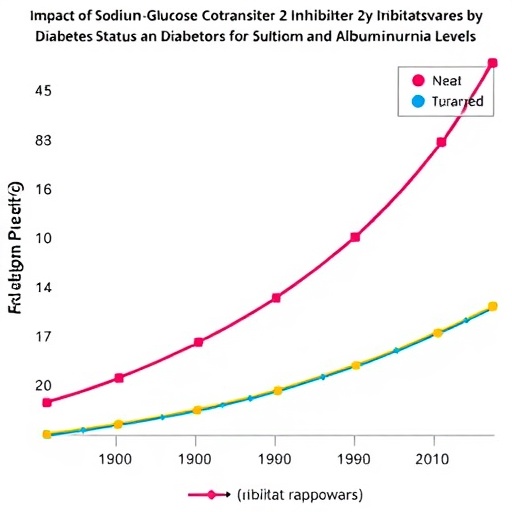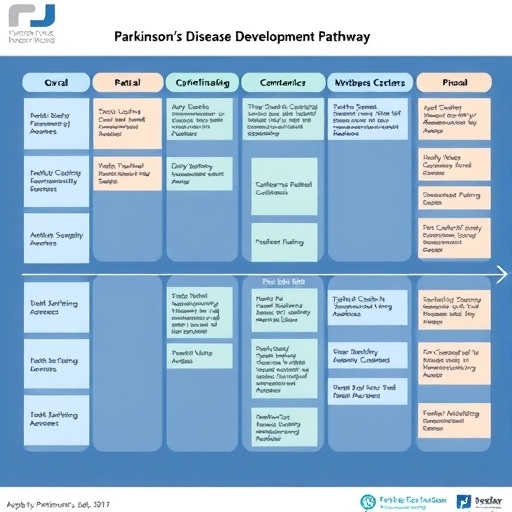
Researchers at the University of California San Diego School of Medicine have made significant strides in addressing the rising concern over xylazine, a veterinary anesthetic not approved for human use. In a collaborative effort with the Prevencasa free clinic in Tijuana, Mexico, they have verified the alarming presence of this drug within the illicit drug supply, particularly at the critical junction of the U.S.-Mexico border. Published on March 20, 2025, in the esteemed Journal of Addiction Medicine, their findings highlight a pressing need for public health interventions to combat this emerging threat.
Xylazine’s presence in illicit drugs has evolved predominantly on the East Coast of the United States; however, a growing body of evidence points to its rising incidence in border cities like Tijuana, where drug trafficking hubs are increasingly notable. Joseph R. Friedman, M.D., Ph.D., the senior author of the study and a resident physician in UC San Diego’s Department of Psychiatry, emphasized the health risks that arise from this new development. He stated that the combined detection of xylazine with illicit fentanyl poses serious threats to individuals who may not be aware of their exposure to such potent substances.
The researchers meticulously analyzed de-identified records from 23 individuals who used the Prevencasa clinic’s services. They examined urine and paraphernalia samples from participants who reported using illicit opioids within the previous day. In a clear demonstration of scientific rigor, test strips were employed to detect not only xylazine but also other common illicit drugs, including fentanyl, opiates, and methamphetamine. Samples of paraphernalia underwent detailed examination through mass spectrometry, ensuring the accuracy and reliability of the findings.
The study revealed some striking results regarding the prevalence of xylazine. Remarkably, xylazine was detected in 82.6% of urine samples when tested with Wisebatch test strips and in 65.2% when using SAFElife test strips. This high detection rate vigorously underscores the urgent need for awareness and intervention strategies surrounding the drug’s increasing presence in the area. Concurrently, mass spectrometry analysis verified the presence of xylazine in over half of the paraphernalia samples tested, alongside fentanyl, fluorofentanyl, tramadol, and lidocaine, indicating a complex interplay of substances in the local drug supply.
In a startling and unsettling finding, 100% of the urine samples tested positive for fentanyl, highlighting the overwhelming prevalence of this potent opioid across the board. The dual detection of xylazine and fentanyl raises critical health concerns, given the known risks associated with each substance. Xylazine is tied to various adverse health effects, including profound sedation and complicated withdrawal symptoms that further complicate treatment for individuals grappling with substance use disorders. Additionally, it poses an increased risk for skin infections and severe wounds, which are particularly concerning for users in unsupervised settings.
Researchers are particularly worried about the implications of Tijuana serving as a major transit point for illicit drugs. The geographical and logistical aspects of drug trafficking suggest that regional xylazine prevalence may soon escalate beyond the border area and into Southern California and potentially further afield. This geographical analysis is crucial because it frames xylazine’s threat within a broader context of drug diffusion patterns and public health risk assessments.
Friedman further urged the expansion of drug-checking efforts, especially in border regions, highlighting a strong case for harm reduction strategies that can provide immediate information to people who use drugs. Testing tools like xylazine test strips can serve as essential harm reduction instruments, offering users critical insights into their exposure risks. The availability and reliable use of such testing technologies are vital components in enhancing public health outcomes for marginalized groups affected by substance use issues.
The researchers drew on a precedent set by previous studies, such as one published in the Harm Reduction Journal, which demonstrated the utility of fentanyl test strips that allow individuals to test their drug supplies before use. With the evolving landscape of drug-checking technologies, there remains an urgent need for enhanced research to standardize xylazine testing methods. The rapid changes in drug composition and the dangers they pose underscore the importance of agility in public health responses.
One noteworthy component of the current research is the identification of lidocaine found at high rates in Tijuana’s illicit fentanyl supply. This discovery raises concerns regarding the accuracy of xylazine test strips and prompts further investigation into the implications of lidocaine’s presence. Researchers plan additional studies to elucidate the reasons behind lidocaine’s inclusion and assess how it may impact drug-testing reliability moving forward.
A call to action has been firmly established within the research community, advocating for larger studies to meticulously track xylazine’s spread and refine existing testing methodologies. The need for ongoing surveillance and research into harm reduction strategies is paramount, as these efforts can inform clinical awareness and public health initiatives in addressing the evolving risks posed by substances like xylazine in the illicit drug supply.
The alarm has been sounded regarding the rising threat of xylazine, with researchers fervently highlighting its potential impact on public health. Collaborative efforts such as the one between UC San Diego and Prevencasa serve as templates for how public health crises can be addressed through interdisciplinary approaches involving academic institutions and community clinics. With extensive research needed to tackle this developing issue, the intersection of drug policy, treatment access, and harm reduction presents an opportunity for transformative change in public health.
As the research community continues to grapple with the complexities of substance use and public health, it is clear that knowledge sharing and collaborative action will be essential. The interconnected challenges posed by xylazine, fentanyl, and additional adulterants like lidocaine necessitate a strategic and coordinated response that transcends geographic boundaries. With this foundational research, future efforts can be better directed to mitigate risks and promote safety among vulnerable populations.
While these findings focus on a specific border region today, the implications of xylazine’s emergence are likely to be felt far beyond, potentially warranting national and international attention. As drug trends become increasingly dynamic, the engagement of public health initiatives with scientific research will be a compelling indicator of how effectively society can respond to the ongoing crises in substance use, thus influencing the lives of countless individuals in need of support.
In summary, the presence of xylazine in the illicit drug supply, particularly at the U.S.-Mexico border, necessitates urgent public health interventions and strategic harm reduction measures. The collaboration between academic researchers and local health clinics forms a critical nexus for addressing the complex landscape of substance use and ensuring the safety of individuals. As researchers continue to elucidate the challenges presented by emerging substances, the need for rapid adaptation and response within the field of public health is clearer than ever.
Subject of Research: The presence of xylazine in the illicit drug supply at the U.S.-Mexico border
Article Title: Xylazine’s Alarming Rise in the Illicit Drug Supply
News Publication Date: March 20, 2025
Web References: https://doi.org/10.1097/ADM.0000000000001474
References: Joseph R. Friedman, M.D., Ph.D., et al. “Study on xylazine presence and implications.” Journal of Addiction Medicine
Image Credits: N/A
Keywords: xylazine, fentanyl, public health, harm reduction, illicit drug supply, drug testing, Tijuana, surveillance, clinical research, substance use disorder.
Tags: behavioral health implications of xylazinecross-border drug trafficking trendsemerging threats in drug usepublic health interventions for drug safetysubstance use disorder and public healthTijuana drug trafficking issuesU.S.-Mexico border drug supplyUC San Diego addiction researchveterinary anesthetic health risksxylazine and fentanyl combination dangersxylazine detection in drug testingxylazine presence in illicit drugs





